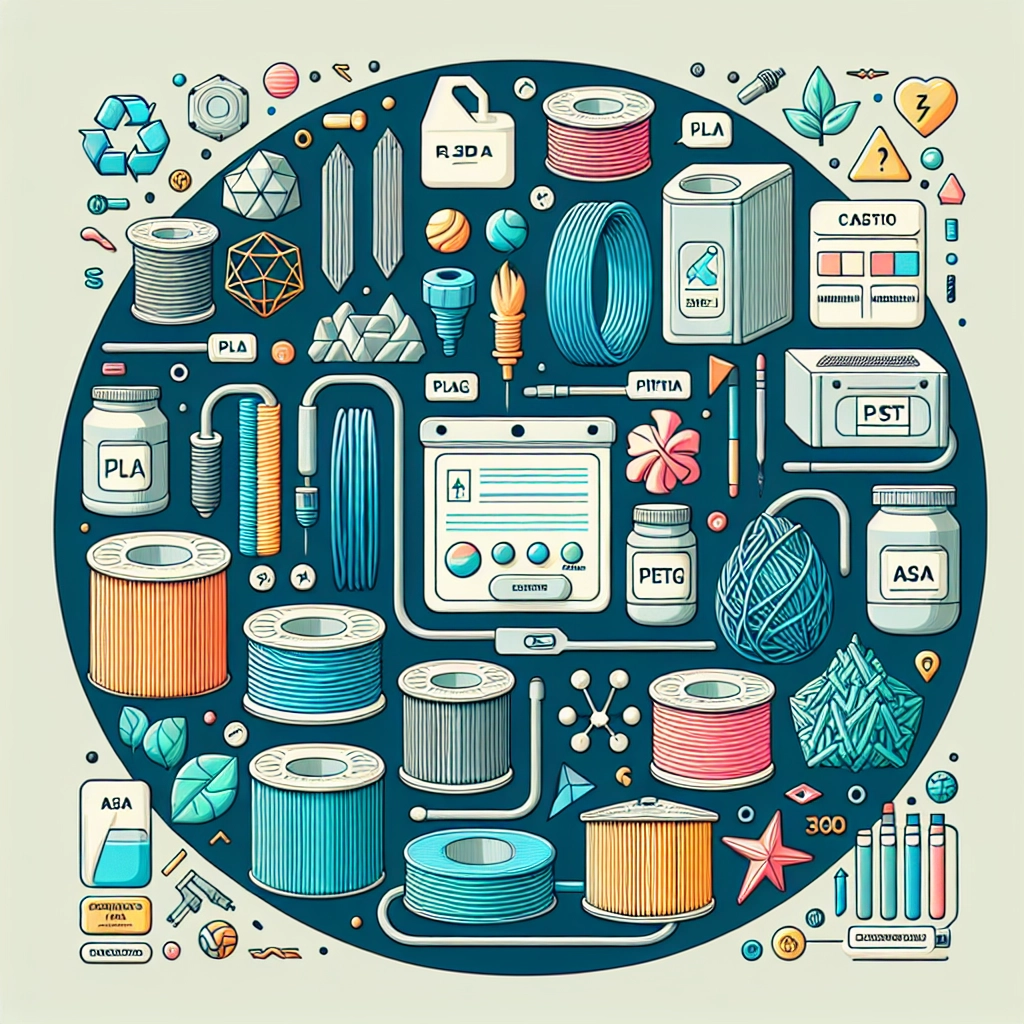Sustainable 3D Printing: Eco-Friendly Filaments You Should Try
In recent years, the world of 3D printing has taken some significant strides toward sustainability. As we become increasingly aware of our environmental impact, many enthusiasts and professionals are seeking eco-friendly options for their printing projects. If you’re intrigued by the idea of printing in a way that’s kinder to our planet, you’re in the right place! Today, we’ll explore some eco-friendly filaments you should consider trying out that not only reduce waste but also inspire creativity in your printing endeavors.
What Is Eco-Friendly 3D Printing?
Before diving into specific materials, let’s clarify what eco-friendly 3D printing really means. Typically, it refers to the use of materials and processes that minimize environmental impact. This could include the use of biodegradable filaments, recycled materials, and processes that consume less energy. The goal is not only to produce 3D printed objects but to do so in a way that reduces our carbon footprint.
The Go-To Eco-Friendly Filaments
1. PLA (Polylactic Acid)
PLA is perhaps the most popular and easily accessible eco-friendly filament. Made from renewable resources like corn starch or sugarcane, PLA is not only biodegradable but also emits fewer emissions during production compared to traditional plastics. This makes it an excellent choice for beginners. While it has lower heat resistance than other materials, it’s perfect for decorative items, prototypes, and educational projects. Just remember, it’s not advisable for items that will be exposed to lots of heat!
2. PETG (Polyethylene Terephthalate Glycol)
If you’re looking for something with a bit more durability than PLA, PETG is a fantastic option. This filament is recyclable and has a much higher strength than PLA. It combines the best of both worlds: it’s easy to print, and it’s resistant to impact and temperature. Plus, it has a glass-like finish that adds an aesthetic flair to your prints. While it’s not completely biodegradable, using PETG still provides a greener alternative to many conventional filaments.
3. TPU (Thermoplastic Polyurethane)
Wondering how to print flexible items without compromising sustainability? Enter TPU! This elastic filament is made from recycled materials and is recyclable itself. It’s perfect for applications where flexibility is needed, like phone cases or toys. TPU can be a little tricky to work with, so it’s ideal for users who have some experience with 3D printing. However, the results can be incredibly rewarding!
4. Wood Filament
For those who appreciate a touch of nature, wood filament derived from recycled wood dust mixed with a PLA base can create beautiful prints that have the appearance and feel of real wood. Not only is it biodegradable, but the prints can be sanded and stained just like real wood, allowing for innovative artistic projects. You can use it for making decorative pieces, sculptures, and even furniture!
5. HIPS (High Impact Polystyrene)
HIPS is another biodegradable option that is often used for support structures in dual-extrusion 3D printers. It’s made from recycled materials and, when printed, can be dissolved in limonene, making removing support structures a breeze without the need for harsh chemicals. HIPS is versatile, lightweight, and an excellent choice to pair with other filaments, promoting a more sustainable approach to complex prints.
6. Recycled Filament
Lastly, if you want to take eco-consciousness a step further, consider using recycled filament made from post-consumer plastic waste. Companies are now producing filament created from discarded plastic bottles, packaging, and more. This not only helps to reduce waste in landfills but also cuts down on the demand for new raw materials. Brands like filament made from recycled PET (rPET) are gaining popularity and are an excellent way to contribute to a circular economy.
The Bigger Picture
As we embrace these eco-friendly options, it’s crucial to remember that sustainability is not just about the materials we use; it’s also about the entire life cycle of the items we create. By opting for biodegradable or recyclable materials, we contribute to reducing landfill waste and decreasing pollution. Moreover, the proactive choices we make with our 3D printing projects can spark awareness and even inspire others to consider eco-options in their own creative pursuits.
3D printing opens up a world of possibilities, and by choosing sustainable filaments, we can combine our passion for technology with our commitment to preserving the environment. So grab your 3D printer, pick an eco-friendly filament, and start printing with purpose! The planet (and your creative side) will thank you for it.

